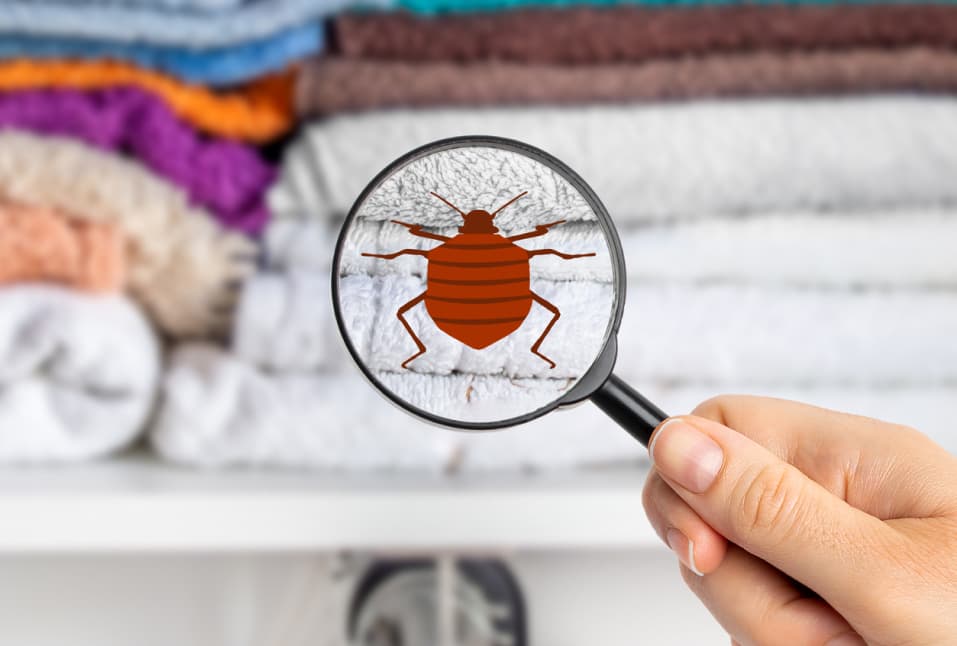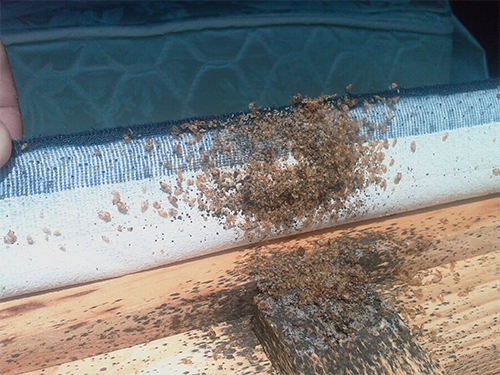Discovering the Science Behind Bed Pest Warmth Treatments as a Sustainable Bug Administration Method
One such technique that has gained traction in recent years is the use of heat treatments to battle bed bug invasions. The intricacies of just how heat efficiently removes bed bugs and the more comprehensive effects for sustainable parasite monitoring techniques make this a subject worth discovering even more.
Bed Pest Heat Therapy Process

Thermal Death Factor for Bed Pests
Exposing bed pests to raised temperatures past their thermal tolerance array is essential for accomplishing reliable removal in warm therapy processes. The thermal death point for bed pests describes the temperature at which these pests can not endure. Research study shows that bed insects start to perish when revealed to temperatures above 113 ° F(45 ° C) for a continual duration. As the temperature increases, so does the death price of bed pests. At around 118 ° F(48 ° C ), bed bugs start to die swiftly, with a mortality rate of almost 99% within minutes of direct exposure. This demonstrates the sensitivity of bed pests to heats and highlights the efficiency of warmth therapies in eradicating problems. By getting to and maintaining temperature levels over the thermal death point for bed pests, insect monitoring experts can make certain detailed elimination of bed bug populaces, including hard-to-reach locations where chemical therapies might be less reliable. Recognizing the thermal death point for bed bugs is crucial for implementing effective warmth therapy strategies and achieving lasting parasite management end results.
Advantages of Warm Treatments
Having actually established the crucial thermal death point for bed insects, it is critical to now discover the considerable benefits that warmth treatments offer in properly eliminating these resistant bugs. One of the main advantages is that warm can permeate deep right into gaps and splits where bed pests hide, guaranteeing that also the most hard-to-reach areas are heated to dangerous temperature levels.
In addition, warmth therapies are non-toxic and eco-friendly, making them a sustainable insect management view it now technique. Unlike chemical pesticides, heat therapies do not leave hazardous deposits that can pose threats to human wellness or the atmosphere. This element is especially essential in sensitive environments such as hospitals, colleges, and suburbs where chemical usage may not be desirable.
Furthermore, heat treatments have a high success price in getting rid of bed pest invasions in a solitary treatment, decreasing the requirement for numerous check outs and decreasing interruption to owners. This effectiveness not just saves money and time but likewise gives satisfaction to those managing bed pest troubles.
Efficiency of Warmth Treatment

Warmth therapies have actually the included benefit of eliminating bed bug eggs, which are often resistant to typical chemical therapies. Overall, the performance of warmth treatments in removing bed bug infestations makes them a sustainable and trustworthy bug management technique.
Lasting Parasite Management Advantages
Carrying out sustainable pest administration practices provides long-term benefits for both the environment and public health and wellness. By making use of techniques such as heat therapies for parasite control, we can minimize the dependence on dangerous chemical pesticides that can have negative effects on ecosystems and human health - bed bug heat treatment. Lasting parasite management approaches aid in maintaining biodiversity by targeting certain parasites without hurting non-target microorganisms, therefore preserving a balanced ecological community
Furthermore, lasting parasite administration techniques contribute to the general wellness and health of the public. By minimizing direct exposure to hazardous chemicals utilized in traditional pest control methods, heat therapies give a safer option for pest monitoring in property, commercial, and public areas. This decrease in chemical use likewise assists in protecting against chemical deposits from polluting air, water, and dirt, protecting ecological quality.
Verdict
In verdict, bed insect warmth therapies have actually been shown to be a link sustainable and effective bug administration technique. The thermal death factor for bed bugs makes them susceptible to warm therapies, which have numerous benefits over traditional chemical treatments. The efficiency of warmth therapies in eliminating bed bug infestations while decreasing environmental effect highlights the capacity of this approach as a lasting solution for insect control.
The bed bug warmth therapy procedure includes elevating the temperature within ravaged locations to a degree that efficiently eliminates bed pests and their eggs. By reaching and preserving temperature levels above the thermal fatality point for bed insects, pest monitoring experts can ensure extensive removal of bed pest populations, consisting of hard-to-reach locations where chemical treatments may be much less effective. One of the main advantages is that heat can permeate deep right into cracks and gaps where bed pests hide, making certain that even the most hard-to-reach areas are heated to dangerous temperatures. Unlike chemical therapies that may leave behind immune populations, warmth therapies provide a non-toxic and eco pleasant solution that can permeate deep into furniture, walls, and other hard-to-reach areas where bed pests conceal.
The thermal death point for bed pests makes them vulnerable to heat therapies, which have many advantages over standard chemical therapies.